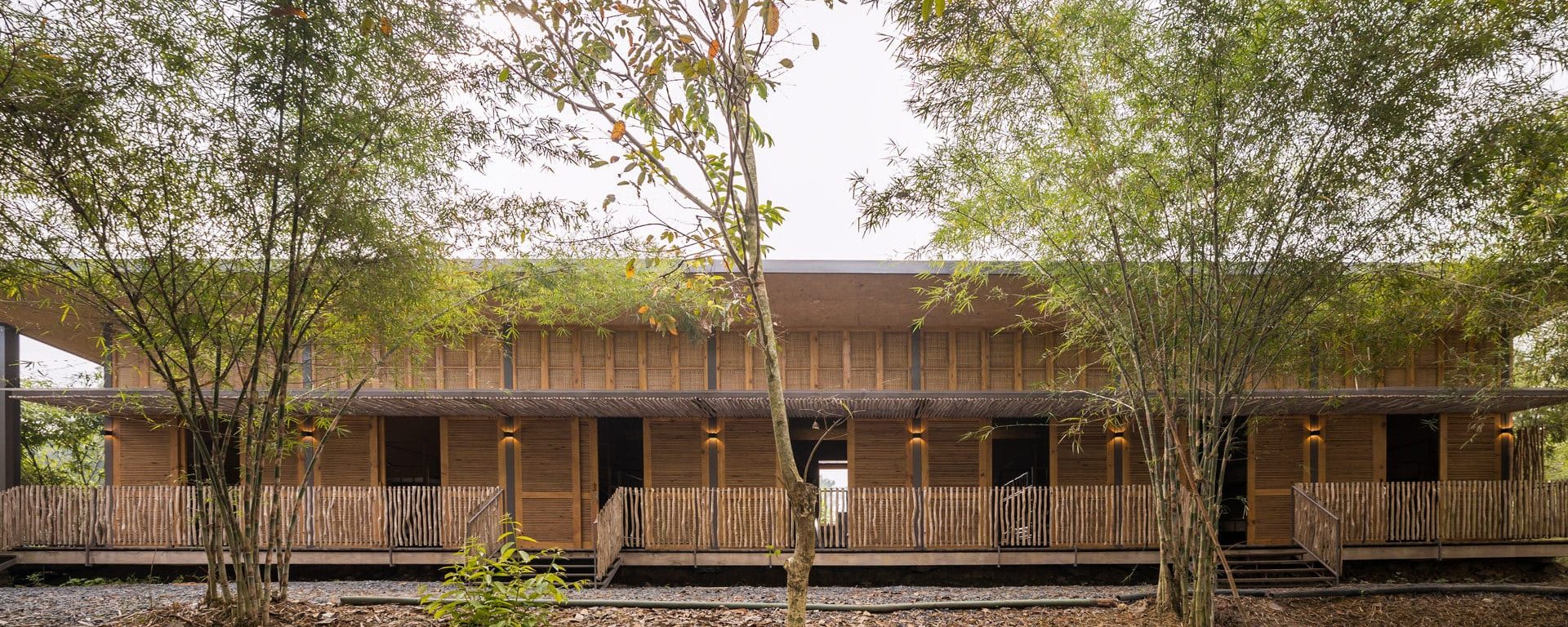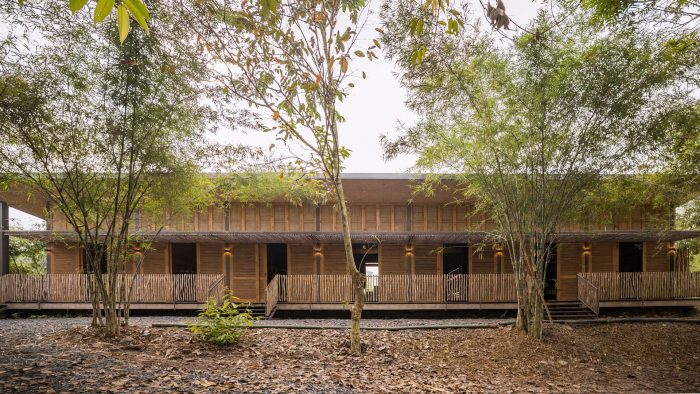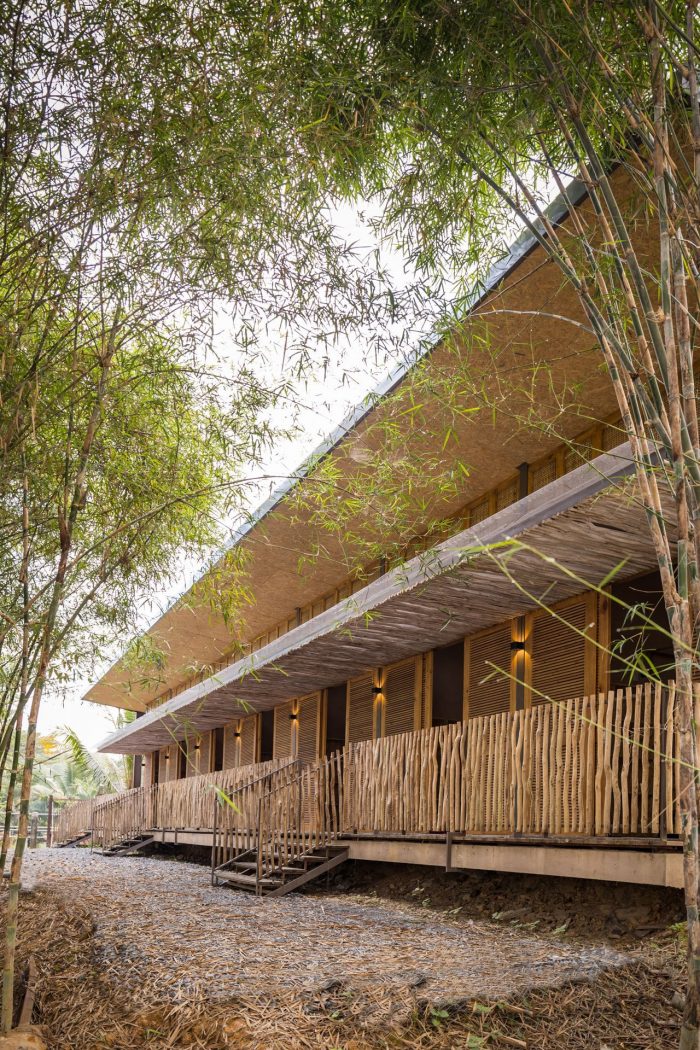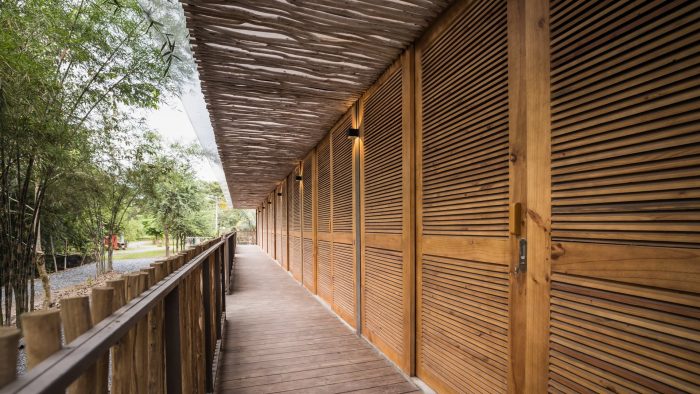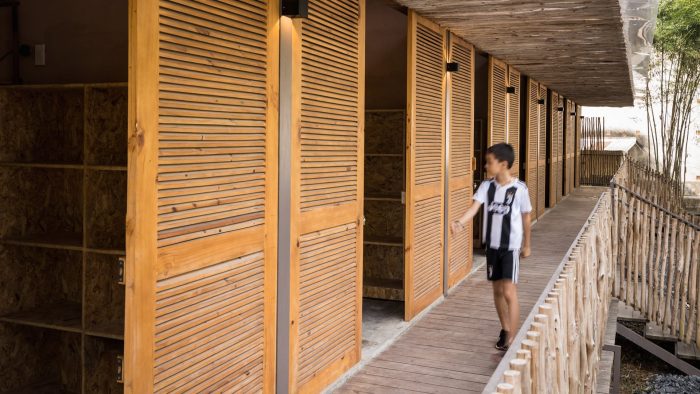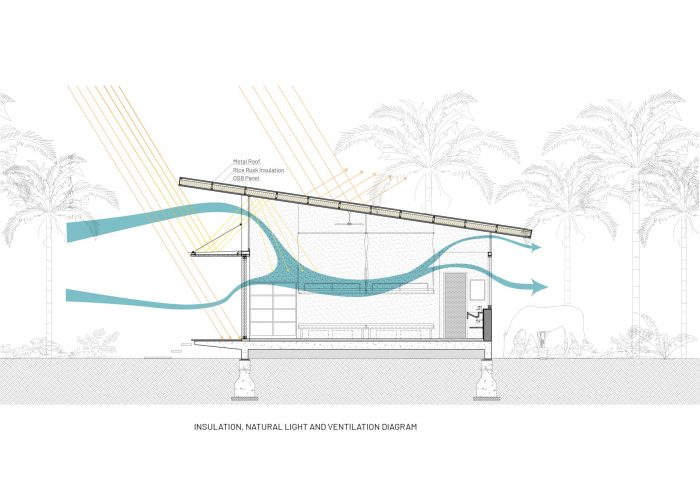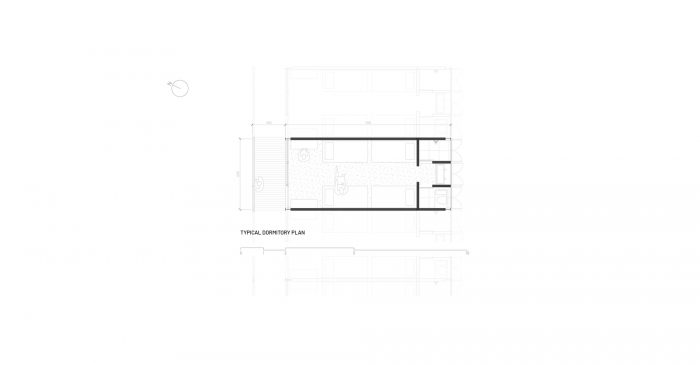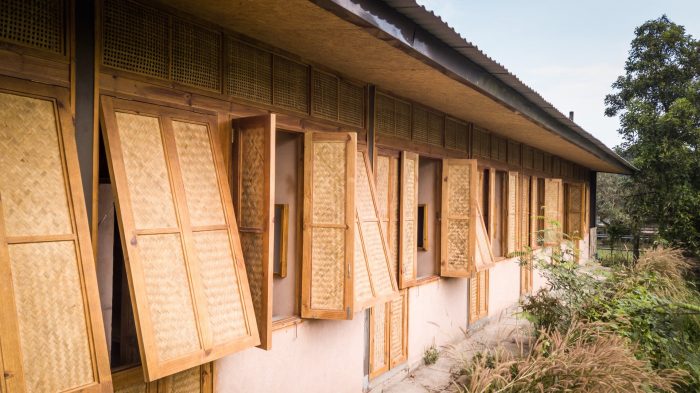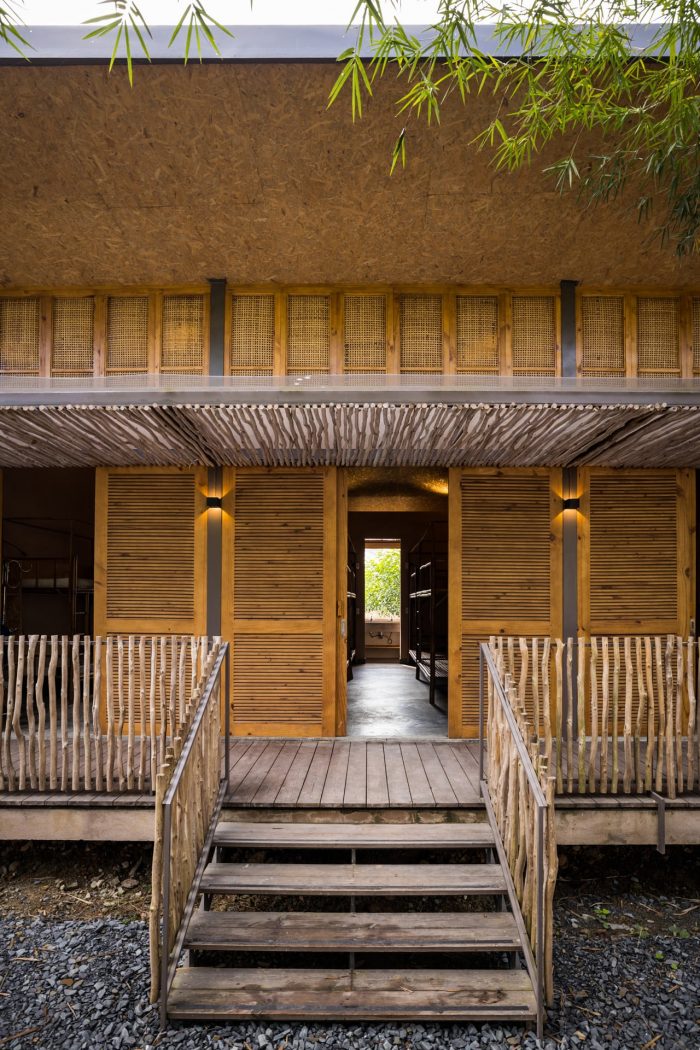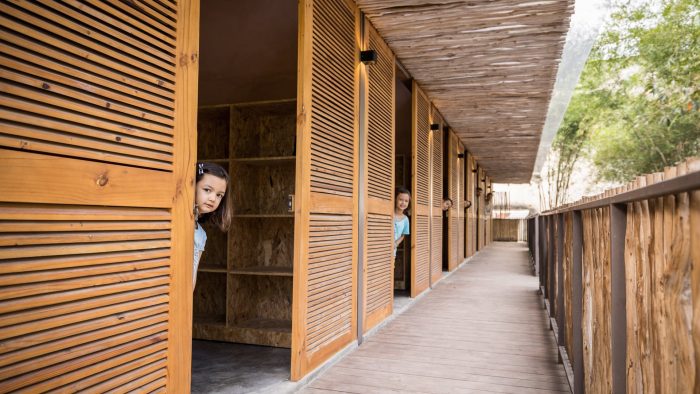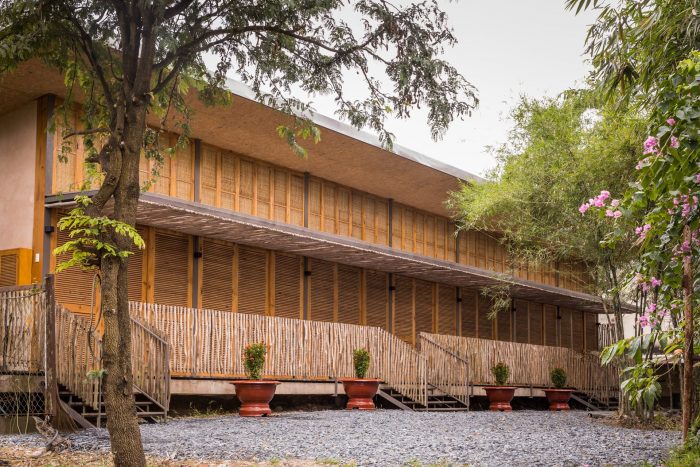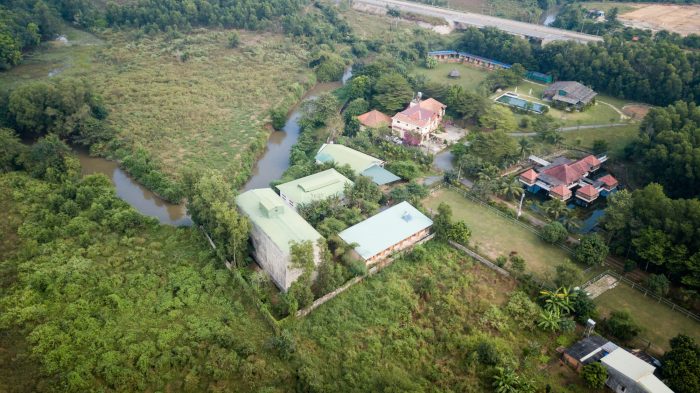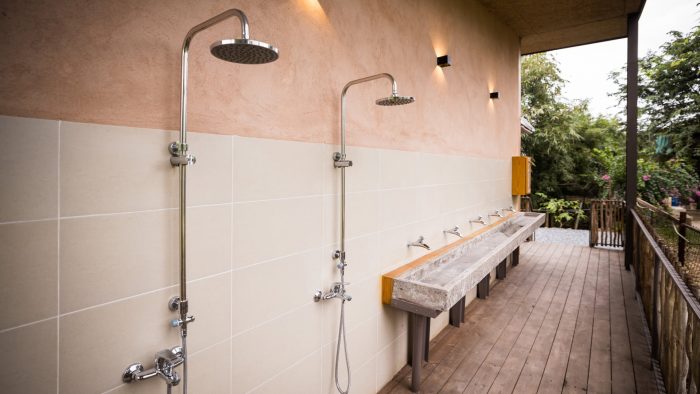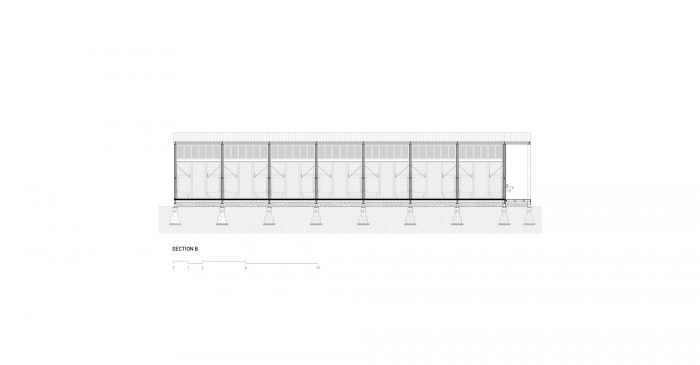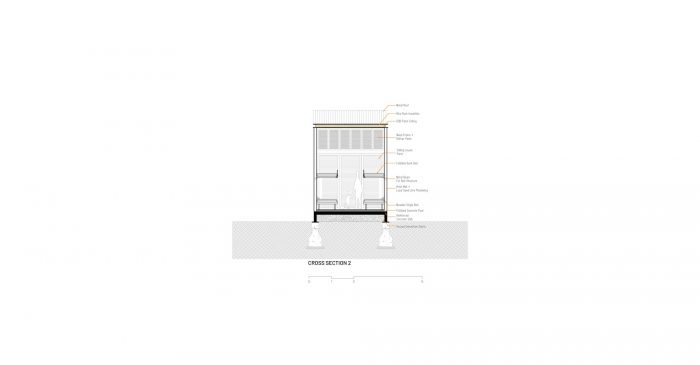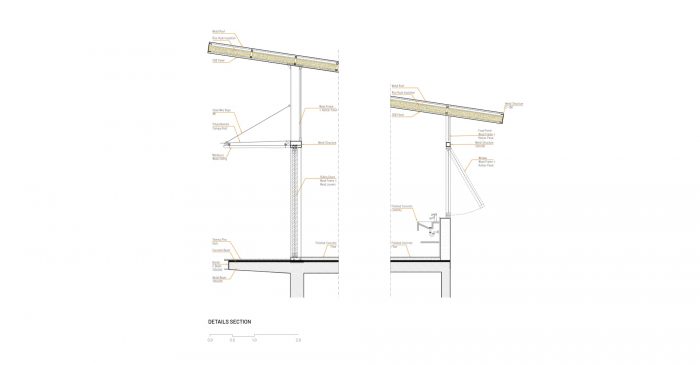T3建筑事务所团队应河马农场的邀请设计宿舍,以迎接 “绿色班”、学生和家庭,他们想更多地了解自然、生态文化、骑马、可持续建筑和所有有意义的活动,以重新连接基本:教育、团队工作、与朋友分享有意义的时间和重新连接自然环境。
T3 ARCHITECTS Team has been invited by Hippo Farm to design Dormitories to welcome “green classes”, students and families who want to learn more about nature, permaculture, horse riding, sustainable construction and all activities which make sense to reconnect with essential: education, team works, share meaningful time with friends and reconnect with the natural environment.
建筑必须反映所有这些想法,以符合河马农场的概念。T3决定首先提出一个生物气候学设计,玩弄太阳的方向,仔细研究旱季的风向(以获得自然气流的最大好处),同时也研究雨季的风向(以保护外墙不被水渗入)。然后,T3决定重新利用被拆除的现有条件恶劣的马箱的碎片,并将建筑提高到洪水线以上(将昆虫和野生动物留在自然土壤上)。
The building must reflect all those ideas to be in line with Hippo Farm concept. T3 decided first to propose a bioclimatic design, playing with sun orientation and studying carefully the wind direction both during dry season (to get the maximum benefits of the natural air flow) but also during rainy season (to protect the façade from water infiltration). Then, T3 decided to reuse the debris from the demolished existing horse boxes in a bad condition, and to raise the building above the flooding line (keeping insects and wild life on the natural soil).
再利用现有的材料是我们以少胜多的节俭方法的一部分……该建筑有一个简单的钢结构,是在工地附近量身定做的,墙壁是用当地的砖头砌成的,上面覆盖着与当地红砂混合的天然石灰抹灰层。屋顶的隔热材料使用越南散装稻壳与硅藻土混合,有助于防止昆虫。稻壳富含硅酸盐,能很好地抵抗热带气候下的高湿度,而且成本低,可被生物降解。所有的门窗都是来自越南的实木(甲板用的是热木),结合竹子编织,这两种材料都能以可承受的预算获得,具有防水性,并能保持建筑的自然通风。
Reusing existing materials is part of our frugal approach to do more with less… The building has a simple steel structure tailor-made near the site, the walls are made in local bricks covered with a natural lime plastering mixed with a local red sand. The insulation of the roof uses Vietnamese bulk rice husk mixed with diatomaceous earth which help to prevent against insects. Rice husk being full of silicate, it resists well to the high level of humidity under Tropical climate – also with low cost and biodegradable. All doors and windows are in solid wood from Vietnam (thermo-wood for the deck) combined with bamboo weaving, both accessible with affordable budget, water resistant and allow to keep the natural ventilation of the building.
为了节约用水,我们建议采用干式厕所系统,由OSB板和一个不锈钢桶组成,在后立面上有一个舱口,方便工作人员操作。在它的系统中不使用水,除了产生可用于河马农场种植园施肥的投入外。按键式水龙头也有助于节约所有水槽的水,这将被孩子们使用,并意识到节约用水的重要性!
To save water, we proposed dry toilets system, made by OSB panels and an inox bucket under with a hatch on the back façade to make operation easy for staff. Without using water in it system, in addition to producing inputs that can be used for fertilization of Hippo Farm plantations. Push-buttons tap also help to save water for all sinks which will be used by kids and aware them about the importance to save water!
扶手和凉棚是用马缨丹木(也来自南越,抗水能力强)制成。屋顶上的太阳能热水器朝向南方,以便在必要时尽可能有效地生产热水。建筑物周围的所有植物都是当地物种,只需要少量的维护,并带来阴影和新鲜感。这座建筑是一个完美的 “宣言”,符合热带国家(乡村)的快乐和创造性节俭的项目。
Handrails and pergolas are made with Melaleuca wood (also from South Vietnam and resisting well to water). Solar heater on the roof is facing South to be the most efficient as possible and produce hot water when necessary. All plants around the building are local species which require a low maintenance and bring shadow and freshness. This Building is the perfect “manifesto” of a project in line with Happy and Creative Frugality adapted for Tropical country (countryside)
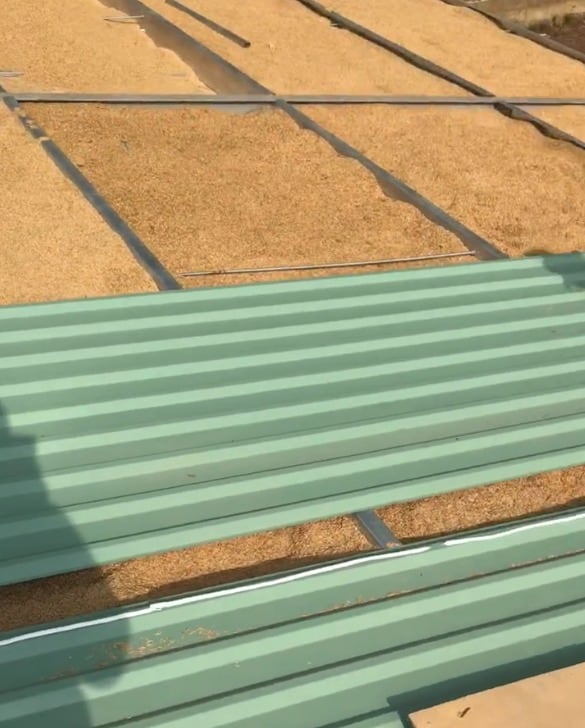
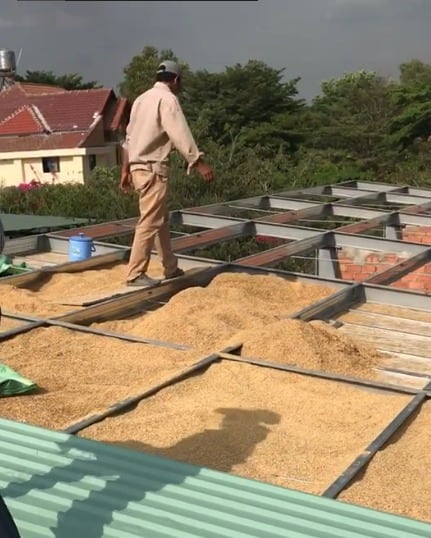
Architects: T3 ARCHITECTS
Area : 218 m²
Year : 2020
Photographs :ALISA Production
Manufacturers : AutoDesk, An Cuong, COTTO, Schneider Electric, Toto, Kelvin&Lux, Panasonic, Trimble Navigation
Architect In Charge : Charles Gallavardin, Tereza Gallavardin, Rafael Lira
Architect : Hai Ta Quang
Interior Designer : Huy Nguyen
Contractor : Harmonie
MEP : Harmonie
Structure Engineers : Harmonie
Country : Vietnam

